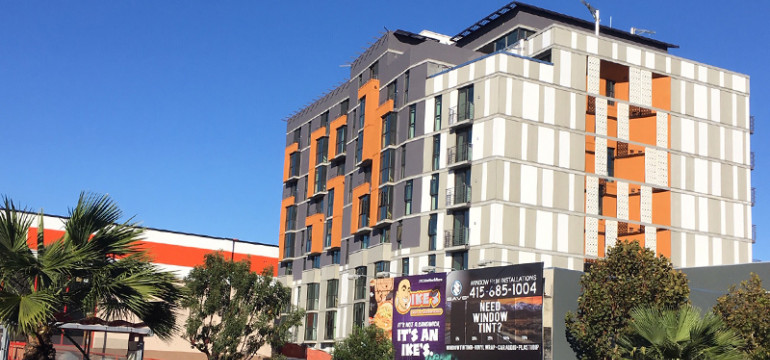US engineer designs resilient building with a little help from his Kiwi friends
A “magic bullet” from a Canterbury engineer provided the key for leading US engineer David Mar to demonstrate that more resilient buildings in earthquake zones do not need to cost more than conventional buildings.
The low-damage design expert will this week speak to New Zealand engineers about Casa Adelante, a recently completed affordable housing project in San Francisco that successfully delivered a high-performance building for almost no additional cost.
Mr Mar will be the keynote speaker at the New Zealand Society for Earthquake Engineering (NZSEE) webinar series thanks to the support of the Earthquake Commission (EQC), where he will talk about designing resilient, affordable buildings that can continue to function after an earthquake.
“Many of the units in the San Francisco project were for very low-income and formerly homeless seniors - people who don’t necessarily have options like staying with relatives or in a hotel if their building is damaged by an earthquake,” says Mr Mar. “That got us really thinking about the design.”
“This low-damage designed building will keep functioning under much bigger earthquake loads and allow people to keep living in the building. For example windows are far less likely to break and the building will stay waterproof and heat-tight,” he says.
Mr Mar explains that his team started designing a conventional building, as well as running a parallel design process for a high seismic-performance building.
“About half way through the design, we realised that with the fine-tuning we were doing, the costs were about the same, so we asked the client if we could go ahead with a low-damage design building,” says Mr Mar, who aimed to deliver a zero-cost increase, and ended up spending an additional $100,000 on a $42m project to include the low-damage design components.
Mr Mar says that while most of the design process focused on fine-tuning a conventional concrete building with structural walls, Professor Geoff Rodgers from the University of Canterbury provided a missing piece of the design puzzle.
“We knew that a good design approach for these types of buildings was to allow them to rock on their foundations in an earthquake and then come back to centre, so they don’t get as damaged. We started with this concept and looked at every aspect of the building and made adjustments that gave a big resilience increase overall,” says Mr Mar.
Most of the building was behaving well under earthquake simulations, except for one tricky area where the design was stuck, says Mr Mar. He was sketching details of the problem in a hotel lobby during a US-Japan-New Zealand seismic workshop in Nara Japan when he encountered Professor Rodgers from the University of Canterbury.
Professor Rodgers shared his research where the team was developing and testing a type of “damper” system that was both powerful and compact. It was the perfect fit for the project, and the two started collaborating on the design.
“That was the magic bullet and gave us a way to essentially bury the damper in the foundations, so that it would limit peak foundation loads, and absorb energy from shaking to manage the rocking.
“So the success of this building in San Francisco was a really international affair,” says Mr Mar.
Case Adelante is the first multi-unit housing project to be evaluated by the US Resilience Council, earning a gold rating.
David Mar will speak at the NZSEE-EQC conference seminar series on 25 June at 1200.
